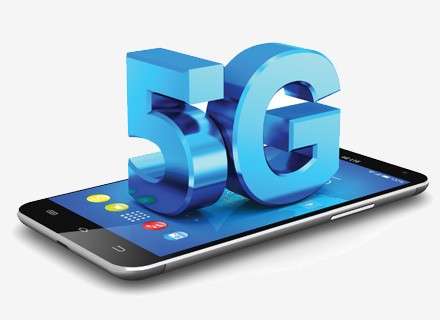The rapid evolution of mobile internet technologies has been a driving force behind the innovation we see in today’s digital world. From 4G to 5G, each new generation of wireless technology brings faster speeds, better connectivity, and enhanced user experiences. While 4G has served its purpose for years, the advent of 5G promises to revolutionize the way we connect, work, and play in profound ways.
In this comprehensive guide, we’ll explore what 5G is, how it works, and how it will impact internet speed and connection quality. If you’re wondering how 5G can transform the digital landscape, you’re in the right place. We will also discuss the potential challenges and the future of 5G connectivity.
What is 5G?
Before diving deep into the specifics of how 5G impacts internet speed and connection quality, it’s essential to understand what 5G is and how it differs from previous mobile technologies. Simply put, 5G is the fifth generation of mobile wireless technology, following 4G (LTE). It represents a significant leap forward in terms of speed, latency, and overall network capacity.
Unlike its predecessors, 5G uses a combination of higher frequency bands (millimeter waves) and advanced technologies like massive MIMO (Multiple Input Multiple Output) antennas, beamforming, and network slicing to deliver faster, more reliable internet speeds with minimal latency. This next-gen network is not just an incremental update—it’s a game changer for industries ranging from entertainment to healthcare, automotive, and beyond.
How 5G Changes Internet Speed
One of the most significant advantages of 5G over its predecessors is its dramatically faster internet speeds. In a world where high-speed internet is no longer a luxury but a necessity, 5G is set to offer speeds that were once thought impossible. Let’s take a look at how 5G will transform internet speed.
Speed Comparison: 4G vs 5G
To understand just how fast 5G is, consider this comparison:
- 4G LTE typically offers download speeds ranging from 10 Mbps to 100 Mbps, depending on factors such as network congestion and signal strength.
- 5G, on the other hand, can provide download speeds of up to 10 Gbps under ideal conditions. This means that 5G is potentially 100 times faster than 4G.
This drastic speed improvement is possible because 5G networks use higher frequency bands, which can carry more data at once. These high-frequency signals, often referred to as millimeter waves, allow for faster data transmission compared to the lower frequencies used by 4G. As a result, you can expect faster downloads, quicker video streaming, and better overall internet performance.
Real-World Impact of 5G Speeds
In practical terms, 5G’s blazing-fast speeds will have a massive impact on various online activities. For example:
- Streaming: With 5G, you can stream 4K and even 8K videos with no buffering or interruptions, providing an immersive viewing experience.
- Gaming: Online gaming will benefit greatly from 5G’s speed and low latency. Gamers will experience faster load times, seamless multiplayer experiences, and reduced lag.
- Remote Work: Video conferencing and cloud-based applications will run smoother, with fewer connectivity issues, making remote work more efficient.
How 5G Improves Connection Quality
Speed is only one part of the equation when it comes to internet connectivity. Connection quality—the reliability and stability of the network—is just as important. 5G technology enhances connection quality in several ways.
Low Latency: A Game-Changer for Real-Time Applications
Latency refers to the delay that occurs when data is transmitted between devices and servers. With 4G networks, latency can range from 30 milliseconds to 50 milliseconds. This might not seem like much, but it can cause noticeable delays in applications that require real-time communication, such as video calls, online gaming, and virtual reality.
5G drastically reduces latency to as low as 1 millisecond. This near-instantaneous response time is a game-changer for real-time applications. For example, in autonomous vehicles, low-latency communication is essential for making split-second decisions. Similarly, industries like telemedicine, where doctors remotely monitor patients or perform surgeries, will benefit from 5G’s ultra-low latency.
Enhanced Reliability: Consistent Performance, Even in Crowded Areas

5G also improves connection reliability, especially in densely populated areas like stadiums, concert halls, and urban centers. 4G networks often struggle in these environments due to network congestion. When too many people try to connect to the same tower, speeds drop significantly, and connections may be lost entirely.
5G, however, is designed to handle much higher network traffic, allowing for more devices to connect to the network simultaneously without a drop in performance. This is achieved through technologies like beamforming and network slicing, which direct data more efficiently to specific users and devices, ensuring better coverage and fewer dropped calls or interruptions.
Better Coverage in Remote Areas
Another major advantage of 5G is its potential to improve coverage in rural and remote areas. While 4G networks often struggle to provide adequate coverage in these regions, 5G’s advanced infrastructure will enable more reliable connections in areas where high-speed internet was previously unavailable. This will bridge the digital divide and bring faster internet to more people worldwide.
The Future of 5G: Beyond Faster Internet
While the primary benefit of 5G is faster internet and improved connection quality, the technology’s potential extends far beyond just browsing the web and streaming videos. Here are some key areas where 5G is poised to make a transformative impact:
1. Smart Cities and the Internet of Things (IoT)
5G is the backbone of the Internet of Things (IoT), enabling billions of connected devices to communicate with one another in real-time. This is crucial for the development of smart cities, where everything from traffic lights to waste management systems is connected and optimized for efficiency.
With 5G’s low latency and high capacity, IoT devices can send and receive data instantly, improving everything from traffic flow to energy use. For example, autonomous cars will rely on 5G to communicate with each other and traffic signals, reducing the likelihood of accidents and improving traffic congestion.
2. Healthcare Innovation
5G will revolutionize healthcare by enabling technologies like telemedicine, remote surgery, and wearable health devices. Doctors will be able to perform complex surgeries remotely with the help of 5G-powered robots, while patients can receive real-time health monitoring and consultations from anywhere in the world.
Additionally, 5G’s ability to handle massive amounts of data quickly will allow for more accurate diagnostics and personalized treatments, making healthcare more efficient and accessible.
3. Industrial Automation and the Fourth Industrial Revolution
The manufacturing sector will also benefit greatly from 5G. With faster and more reliable connectivity, factories can implement advanced automation systems that rely on real-time data to make decisions. 5G-powered robots and machinery can communicate with each other to optimize production processes, reduce downtime, and improve safety.
This is part of the larger trend known as Industry 4.0, where automation, data exchange, and artificial intelligence come together to revolutionize manufacturing.
Challenges of 5G Rollout
While 5G offers numerous benefits, its rollout is not without challenges. Some of the key obstacles include:
- Infrastructure Costs: Building the necessary infrastructure for 5G, such as small cell towers and fiber optic cables, requires significant investment. Many countries are still working to deploy the necessary networks.
- Spectrum Allocation: The use of higher-frequency bands for 5G presents challenges in terms of spectrum allocation. Governments must manage the available frequencies to ensure fair and efficient use.
- Health Concerns: There have been concerns about the potential health effects of increased exposure to radiofrequency radiation from 5G networks. However, scientific studies have yet to prove any significant health risks associated with 5G.
Conclusion: The Transformative Power of 5G
5G is poised to change the way we interact with the digital world. With faster speeds, lower latency, and improved connectivity, 5G will not only enhance our internet experiences but also enable new technologies that were previously unimaginable. From smart cities to autonomous cars, 5G’s impact will be felt across industries and daily life.
As the rollout of 5G continues worldwide, it will open up new opportunities for innovation, economic growth, and connectivity. While challenges remain, the potential of 5G is immense, and we are only scratching the surface of what this transformative technology can achieve.
Stay tuned as 5G evolves, and keep an eye on how it shapes the future of our digital lives.
